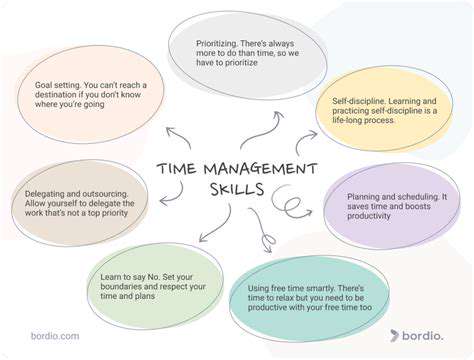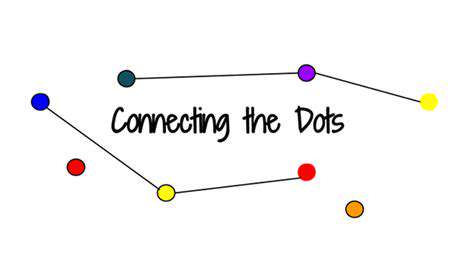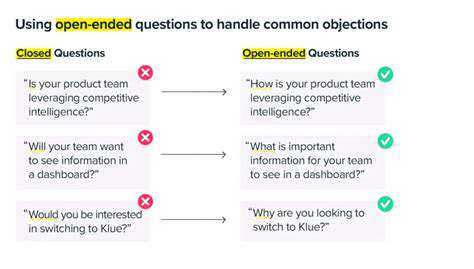How to Improve Your Pitching Skills (Public Speaking)
Building Trust and Credibility
Share your origin story - what personal experience led you to create this solution? Include third-party validation: After implementing our system, XYZ Company reduced onboarding time by 60%. These elements work together to establish you as both relatable and reliable.
Demonstrating Enthusiasm and Passion
Your energy sets the tone. When discussing results you've helped achieve, let your genuine excitement show. This isn't about theatrical delivery, but about allowing your conviction to come through naturally. People believe in solutions that the presenter clearly believes in themselves.
Active Listening and Responding to Questions
Treat questions as opportunities, not interruptions. When someone asks about pricing, first acknowledge the concern: That's an important consideration - let me break down the ROI. This approach builds dialogue rather than delivering monologues. The best pitches feel like conversations, not presentations.
Mastering Delivery Techniques: Voice and Body Language

Understanding the Fundamentals of Voiceover Delivery
Great voice work isn't about having a radio voice - it's about connecting words to meaning. The difference between reading and communicating lies in your intention. Before recording, ask: What should the listener feel? What action should they take? This purpose transforms technical delivery into compelling storytelling.
Developing Vocal Control and Pacing
Practice varying your pace with a simple exercise: read a children's story dramatically fast, then painfully slow. Notice how speed changes the emotional impact. For technical content, aim for 150 words per minute - fast enough to maintain energy but slow enough for comprehension.
Utilizing Pauses and Emphasis
The space between words often speaks loudest. Try this: when making an important point, pause for two full seconds afterward. This feels uncomfortably long to the speaker but powerfully emphasizes the point for listeners.
Incorporating Emotional Nuances
Emotion lives in the details. Instead of generic enthusiasm, identify the specific emotion needed - is it hopeful? Urgent? Nostalgic? Record yourself conveying the same sentence with five different emotional colors to expand your range.
Adapting to Different Script Styles
Create a style guide for each project. For corporate training, you might note: Authoritative but approachable, like a favorite professor. For commercials: Upbeat but not salesy, like recommending a product to a friend. These touchstones keep your delivery on-target.
Mastering Character Voices
Build characters from the inside out. Instead of just altering pitch, consider: How would this character stand? What's their backstory? Physicality informs vocal quality more than most voice actors realize.
Practicing and Refining Your Skills
Record your practice sessions, then listen while doing mundane tasks. This simulates how audiences actually consume content - while multitasking. If your delivery holds attention during dishwashing, it'll shine in ideal listening conditions.
Considering pet adoption requires more than admiring cute faces. The reality involves 5am walks in pouring rain and budgeting for unexpected vet bills. Before visiting shelters, track your actual (not ideal) weekly schedule. How many late nights does your job really require? Be mercilessly honest - a dog's wellbeing depends on it.
Rehearsing and Refining Your Performance
Understanding the Fundamentals
Effective pitching begins with strategic research, not creative writing. Identify three journalists who recently covered similar topics. Study their angles - did they focus on human interest or hard data? This reconnaissance informs how you frame your story for maximum relevance.
Crafting a Compelling Narrative
Structure your pitch like a news story, not an advertisement. The lead should answer: Why does this matter now? Perhaps tie to a current event: As schools debate phone bans, our research reveals... This positions your content as timely rather than self-promotional.
Tailoring Your Pitch to the Recipient
Personalization goes beyond using someone's name. Reference a specific article they wrote: Your piece on remote work challenges perfectly sets up what we've discovered... This demonstrates genuine engagement with their work, distinguishing you from mass-mailers.
Practicing and Refining Your Delivery
Record your pitch on video, then watch with sound off. Does your body language project confidence? Now listen without video - does your vocal tone match your words' enthusiasm? This dual analysis reveals disconnects between what you say and how you deliver it.
Analyzing Your Results and Iterating
Create a simple tracking system: note which subject lines got opens, which angles prompted replies. Over time, patterns emerge. Maybe tech journalists respond best to data, while lifestyle editors want personal stories. Let these insights guide future approaches.
Staying Updated and Adapting
Subscribe to newsletters from PR Daily or similar sources, but also study outside your field. How do top TED speakers structure talks? What makes certain podcast hosts irresistible? Cross-disciplinary inspiration often yields the freshest pitching techniques.











![Best Online Courses for Learning [Specific Business Skill, e.g., Negotiation]](/static/images/32/2025-05/ComprehensiveNegotiationStrategies3AChoosingtheRightCourse.jpg)